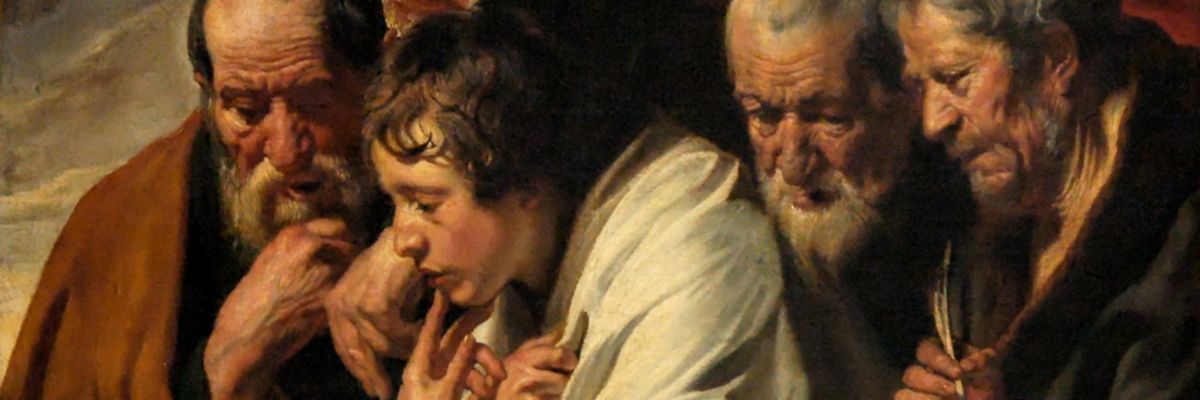
In what order were the synoptic Gospels written?
The theory most in favor in recent decades has been that of Markan priority. It holds that Mark wrote first and that Matthew and Luke borrowed from him and from a collection of the “sayings of the Lord” known as Q (from the German Quelle, “source”). Mark is not only the shortest of the synoptic Gospels, it is the most simply written. Advocates of Markan priority say it makes more sense to think that Matthew and Luke expanded on Mark rather than that Mark reduced either Matthew or Luke.
Markan priority supplanted the traditional theory that held that the first three Gospels were written in the order in which they appear in our Bibles: Matthew, Mark, and then Luke. The traditional theory was advocated by Augustine, so his name often is identified with it. It did not receive much opposition from scholars until the eighteenth century.
The biggest problem with Markan priority is that it depends on the existence of Q, but no such document ever has been found, nor has any ancient reference to it ever been uncovered. No one seemed to have known about it until modern scholars deduced its existence as being necessary for the theory of Markan priority to work at all.
Another problem for Markan priority has been the motives of some of its advocates, especially early ones. Many of them argued for the theory precisely because Mark’s Gospel has the fewest miracles and because they had an anti-miraculist bent. If Mark wrote first and Matthew and Luke later, these scholars could argue that the latter two intruded pious but false stories into the narrative.
The traditional theory and the theory of Markan priority were not the only ones in play. In 1776 J. J. Griesbach, a German Bible scholar, proposed that the true order of writing was Matthew, Luke, and then Mark, with Mark relying on the first two. The “Griesbach Hypothesis” never won a large following, but it had the convenience, as did the traditional theory, of not having to imagine something like Q.
In recent decades Griesbach’s ideas were refurbished by Dom Bernard Orchard, monk of Ealing Abbey and chief editor of the 1953 Catholic Commentary on Holy Scripture (which, along with its 1969 revision, are my favorite commentaries). In three books published between 1977 and 1993, Orchard advanced a modification of Griesbach’s idea. He proposed that the order of writing was Matthew, Luke, and then Mark, which is what Griesbach had proposed, but that the order of publication was Matthew, Mark, and then Luke. Orchard said that Mark, a follower of Peter, for whom he acted something like a secretary, wrote in essence the Gospel according to Peter. Orchard said that Luke, who was neither an apostle nor the secretary to one, likely would have withheld publication of his Gospel until it could be approved by Peter or other apostles. He wrote before Mark did, and Mark took information from him and from Matthew, but Mark’s Gospel came out first, Luke having to wait for an imprimatur, so to speak.
I find Orchard’s thesis persuasive, if not compelling, particularly since I hold, with writers such as Jean Carmignac and Claude Tresmontant, that all of the Gospels were been written much earlier than advocates of Markan priority will allow. Besides, I think Q is a fantasy and that any such document, had it ever existed, would have been preserved, copied, and commented upon in antiquity just as the canonical books of the New Testament were, yet antiquity is entirely silent on Q.
Whatever the final resolution of such biblical disputes may be, I note with deep regret the death of Dom Bernard Orchard on November 28 at the age of 96.



